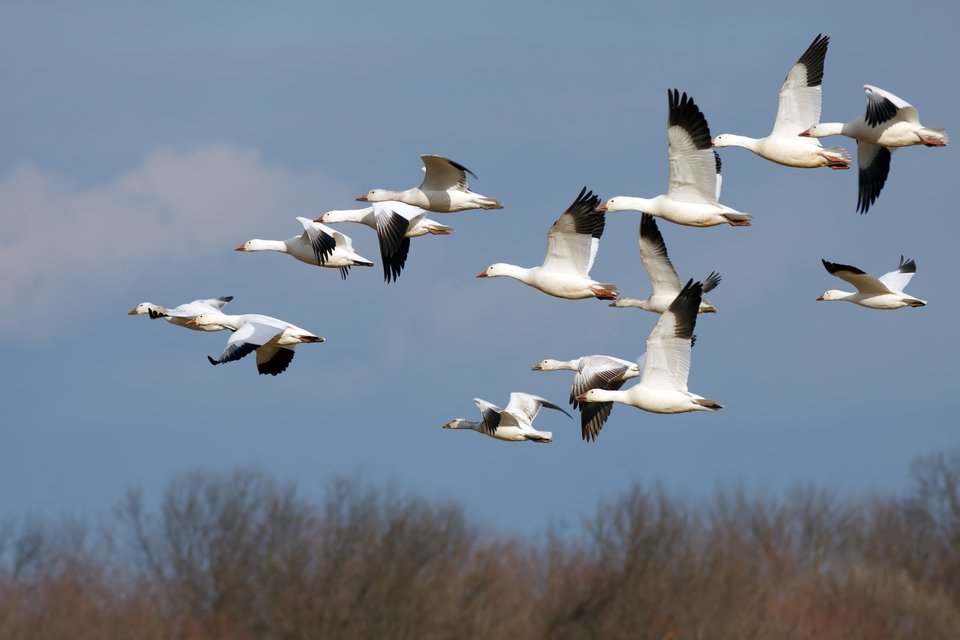Happy International Migratory Bird Day
Look to the skies—if you happen to see a flock of birds heading north, you’re not alone! Around this time of year, migratory birds are headed by the droves to their summer breeding grounds; it’s such a big occurrence that Environment for the Americas has chosen May 9th as International Migratory Bird Day. In anticipation of the holiday, we’re looking at the different types of migratory birds and where they’re headed this summer. Keep reading today’s blog to see if you can spot any of these birds while out on your Monterey this season!
The early birds: First up, let’s take a look at the birds that have already headed north—ducks, geese, and swans. These waterfowl are among the first to leave, starting their migration as soon as lakes begin to thaw. If you live up north, you might have also seen killdeer and red-winged blackbirds in January or February—these birds love to stay as far north as possible, and won’t go too far south for their winter vacations! Those strong-willed birds of prey that you often see circling the sky—like Bald eagles, rough-legged hawks and red-shouldered hawks—will also be among the first to head north, braving the harsh aftermath of winter weather as soon as they can.
Who to look out for: If you’re just getting into birdwatching, or would just like to catch some of the last few species on their way up, you’re not too late! Be sure to look for late-returning shorebirds like the white-rumped sandpiper, who spends its winter in southern South America and will be returning from its extra-long journey from May to June. Songbirds that spent their winter in the Tropics, like warblers, thrushes, orioles and vireos started their return in April and will continue throughout this month, so watch out for them on your trips.
How you can take part: If you’ve never seriously committed to birdwatching, why not make this year the year you start? Even when the summertime migration is over, there’s still plenty to observe from wherever you are in the world in the fall and winter months, too.
The best tips we’ve been given are to pick up a good pair of binoculars, invest in a bird guide, and just go out and observe! The more time you devote to watching, the more familiar you’ll become with the various shapes, sizes and colors that birds can come in—and, of course, what they sound like and where they like to nest. For boaters especially, bird watching can be an especially rewarding activity—you’ll never be in a lull while out on the water because you’ll always be looking for the next bird! If you can’t go out on a particular weekend, you can still watch for birds and think about which ones you’d like to find while out on the water—there is a whole world of aquatic birds out there just waiting for you to stumble upon.
International Migratory Bird Day is also largely about conservation efforts that make the land, sea and sky safe for our feathered friends. It’s a great day to think about your eco-friendly habits while you’re out on the water!

Bookmark & Share
User Comments
Be the first to comment on this post below!
Previous Article
Next Article















